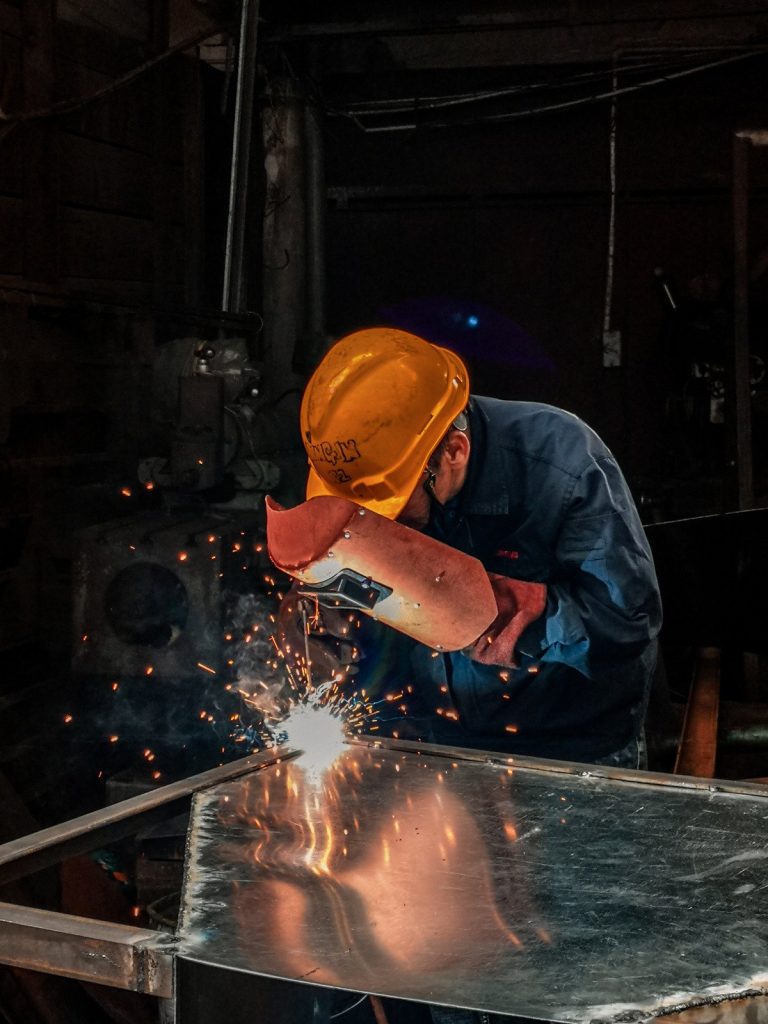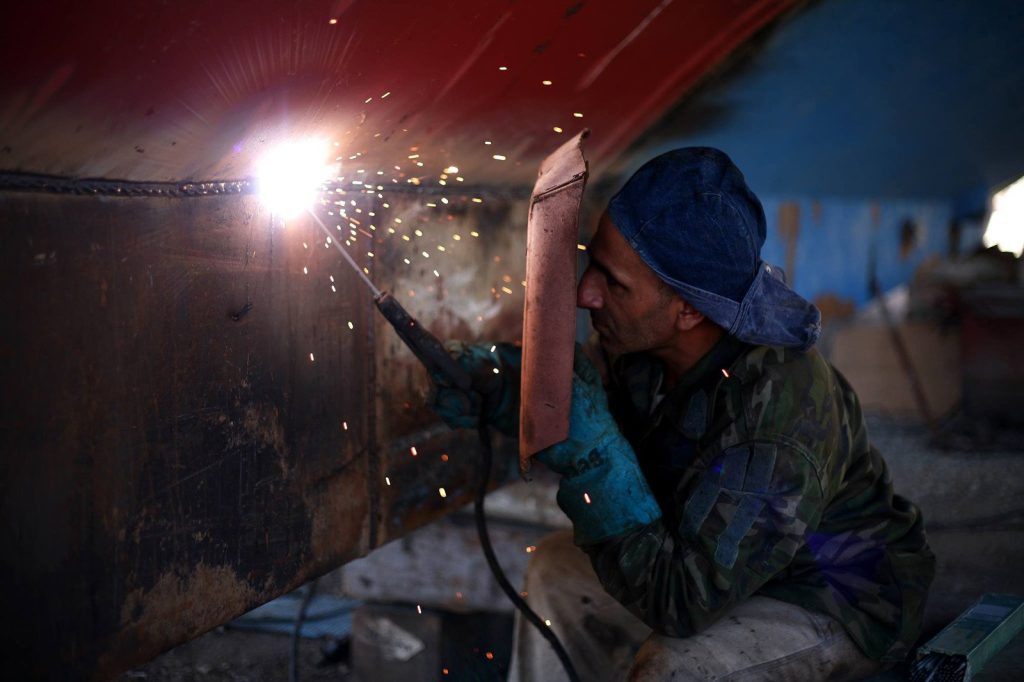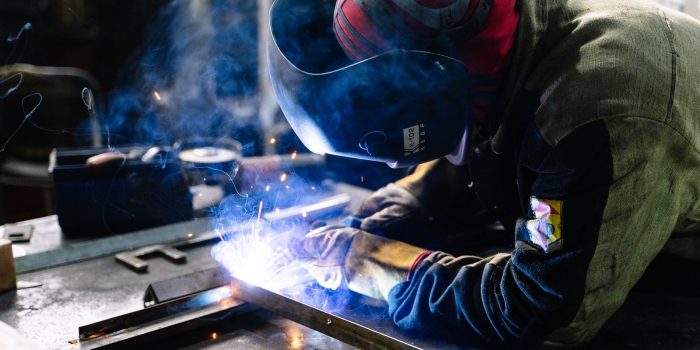Where do we use the MMA method?
Welding with covered electrodes is used in, among other things:
- locksmithing;
- artistic blacksmithing;
- shipbuilding industry;
- minor assembly work;
- working in difficult field conditions or under water;
- installation work in the manufacturing industry, in the construction industry;
- as a hobby, in home workshops;
- when joining large metal parts (more than 1.5 mm thick).
Strengths of combined electrode welding:
- time-saving;
- ability to work in difficult weather conditions;
- high joint strength;
- feasibility of repairing cast iron components;
- stainless steel or steel components can be combined.
Tools required for MMA welding:
- protective gloves;
- cotton work apron;
- protective mask;
- transparent safety goggles.
How to weld safely?

The basis for calm welding is to remove contact lenses beforehand. When working, one should never look at an electric arc with eyes not covered by a protective mask. Due to the danger of toxic fumes (e.g. phosgene), never weld in the vicinity of an organic trichloroethylene compound.
Arc electrode designations
The basic designation for covered electrodes intended for arc welding is the letter E. We can divide them into two class types, depending on the strength properties of the alloy. Electrodes whose binder tensile strength is within the range: 430 - 510 MPa - are designated with the symbol 43, while in the range: 510 - 610 MPa are designated with the symbol 51.
Letter symbols indicating the specific type of lagging:
- (A), or acidic;
- (AR), or acid-rutile;
- (B), or alkaline;
- (C), or cellulose;
- (O), or oxidising;
- (R), or rutile (a.k.a. medium-shot electrode);
- (RR), or rutile (a.k.a. thick-bulb electrode);
- (S), a different type of lagging.
Numerical symbols indicating the yield of the electrode alloy:
- no designation - with an alloy yield of 105%;
- 110 - with an alloy yield of 105 - 115%;
- 120 - with an alloy yield of 115 - 125%;
- 130 - with an alloy yield of 125 - 135%.
Numerical symbols indicating welding positions:
- 1, i.e. all items;
- 2, i.e. all positions except vertical (when laying the joint down);
- 3, i.e. sub-follicular and collateral;
- 4, i.e. a sub-field;
- 5, i.e. sub-bottom, wall, side and vertical (when laying the joint downwards).
Welding of cast iron

The welding of cast iron, which is an alloy of iron with carbon and alloying additives, can be carried out cold or hot. When welding cast iron cold, using MMA, TIG or MIG/MAG welding, it is not necessary to preheat the alloy. The temperature maintained during the welding process should be between 60 and 70 °C within a distance of approx. 100 mm from the weld pool (30 to 40 °C). When deciding on this solution, the current parameters should be set as low as possible and short welds should be laid so that the casting does not heat up to more than 70 °C. It is recommended that the length of one weld section should be no more than 20 or 30 mm. The first cast iron should be laid in the middle of the crack, while the next cast iron should be laid at the ends and this should be done alternately until a full stitch is made. When cold welding cast iron, it is advisable to lightly overbite the weld with a hammer and to stop work each time a section of the weld is placed. This technique is mainly used when repairing large and heavy castings and when the hardness of a part of the casting or weld is allowed to increase. With the above methodology, expensive nickel-copper, iron-nickel, nickel or sometimes steel binders are used.
Inverter and MMA welding - which to choose?
Hand-held 230 V inverter welders are an excellent choice in particular for hobby welders in small workshops. The aspect you should pay the most attention to when looking for a welder is that they have 230 V invertors suitable for MMA welding, reliability and resistance to electromagnetic wave interference. They should therefore be equipped with modern IGBT transistors and have modern functions, which will improve the comfort of our work (i.e. voltage reduction system Vrd, Arc Force, Hot Start). In addition, built-in protection against voltage spikes as well as overheating protection will be a major advantage.
230 V mains-powered welders used during MMA include:
- Magnum Snake 203 GDMS;
- Paton 200 Pro VDI;
- Sherman 200 Speedy.
Advantages of the above devices:
- They have a digital display that allows precise setting of welding parameters and are easy to operate;
- We can immediately obtain additional accessories (e.g. transport case, electrode holder, cable with earth clamp, shoulder strap, gloves, welding electrodes, automatic visor).
What to look for when choosing an inverter welder?
The most important aspect is that the welder has 230 V inverters suitable for MMA welding, reliability and resistance to electromagnetic wave interference.
Is MMA welding used in the shipbuilding industry?
Yes, in addition to its use in locksmithing, artistic blacksmithing, small assembly work, installation work in the construction industry and the manufacturing sector, among others.


